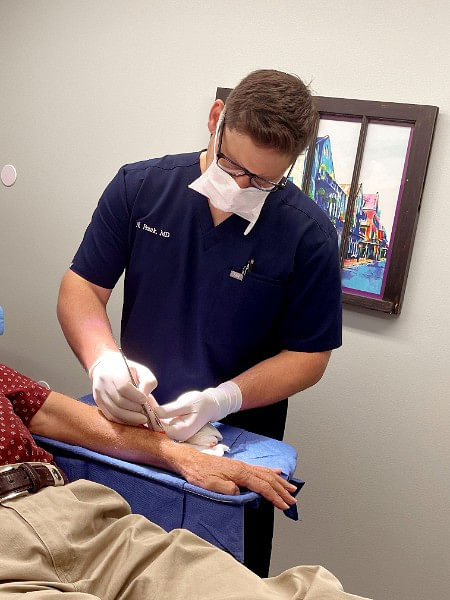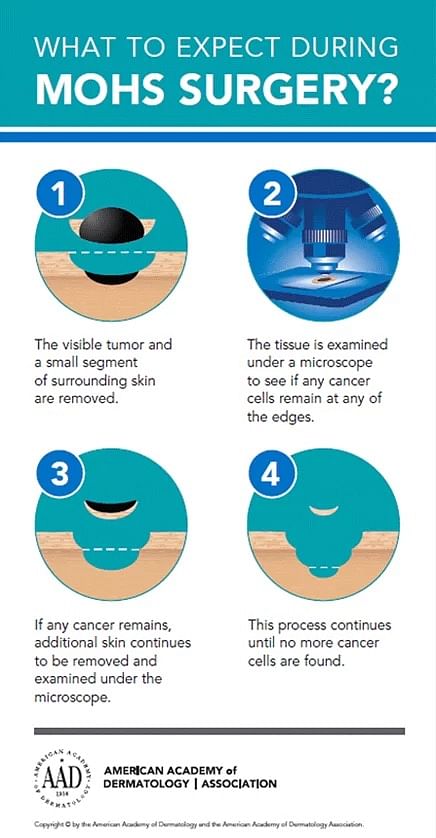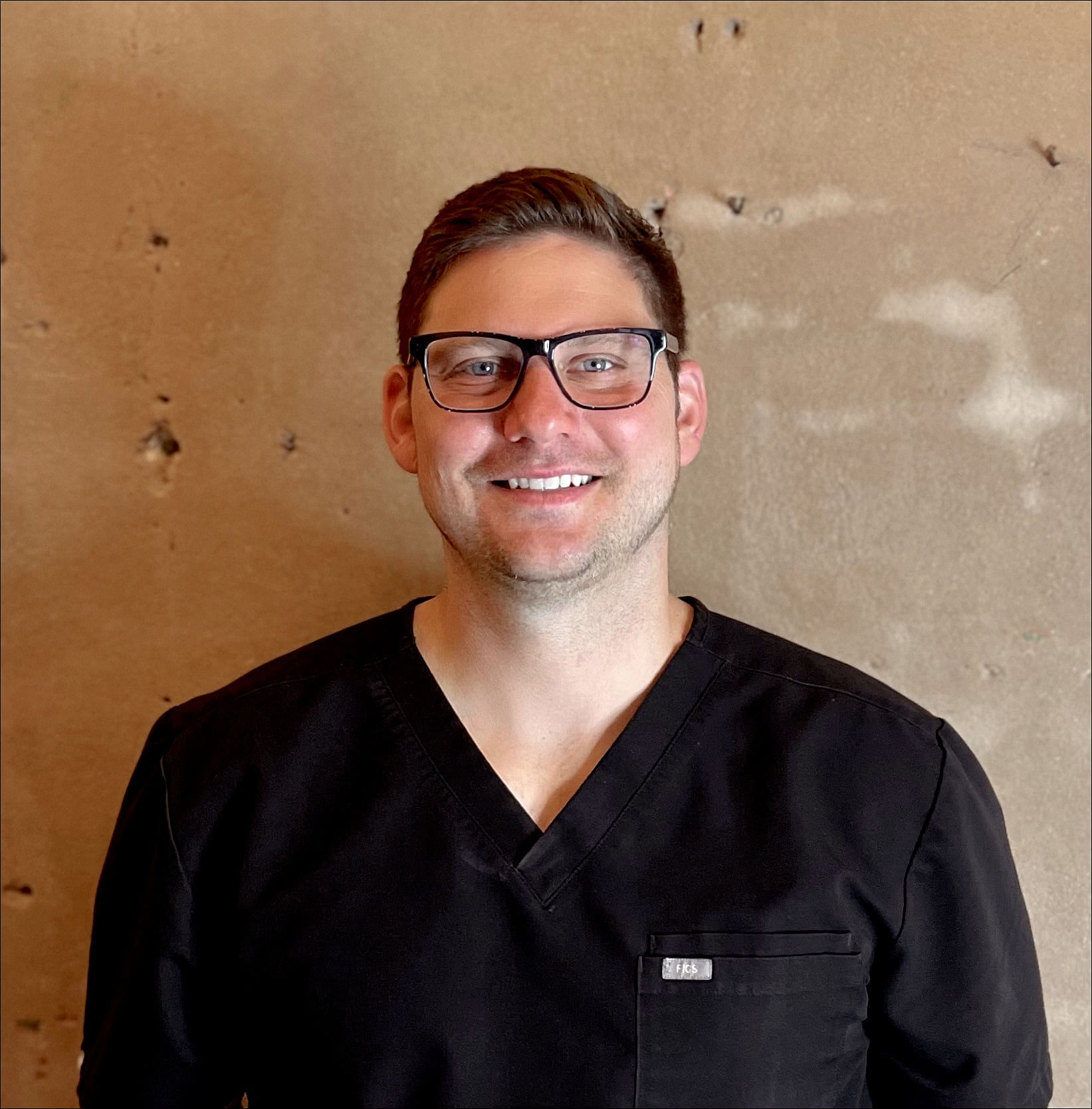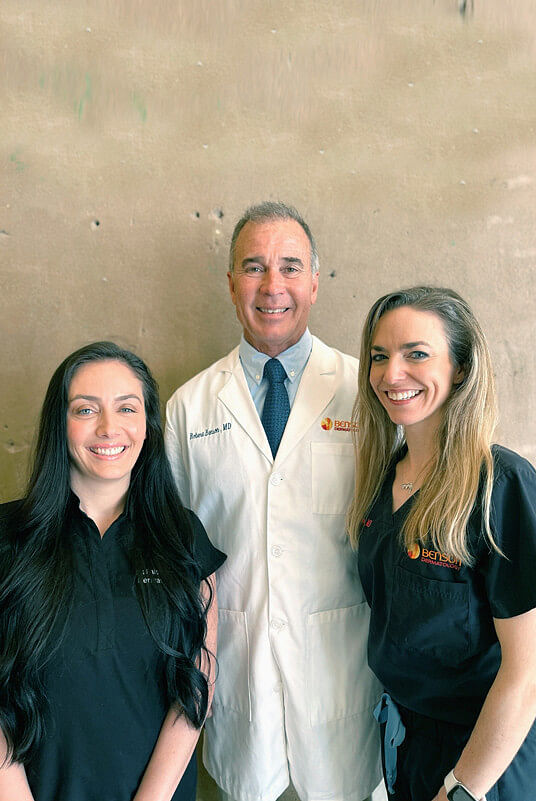

Frequently
Asked Questions
Mohs surgery, also known as Mohs micrographic surgery, was named after Dr. Frederic Mohs. Dr. Mohs developed the technique at the University of Wisconsin in the 1930’s. Mohs micrographic surgery has since been refined into the most advanced, precise, and effective treatment for an increasing variety of skin cancer types.
During Mohs surgery, the surgeon can see where the cancer stops. This isn’t possible with other types of treatment for skin cancer. This has two important advantages:
- Mohs has a high cure rate--even if the skin cancer has been previously treated by another method.
- Mohs allows you to keep as much healthy skin as possible because the surgeon only removes the skin with cancer cells. This is especially important when skin cancer develops in an area with little tissue beneath (e.g., eyelid, ear, or hand).
If you have Mohs surgery, you’ll see a doctor who is a trained Mohs surgeon. Benson Dermatology's in-office Mohs surgeon is board certified dermatologist and fellowship-trained Mohs surgeon Dr. Nick Frank who has performed thousand of successful Mohs cases to remove skin cancers.
A STEP ABOVE
Since not all Mohs surgeons have equivalent training and level of skill, Benson Dermatology is committed to offering Mohs surgery performed only by a fellowship-trained Mohs surgeon such as Dr. Nick Frank. Mohs fellowships are highly selective programs, include 1-2 years additional post-dermatology residency training, and require a minimum of 500 post-residency surgical cases, especially the most difficult types.
During Mohs surgery, patients remain awake and alert. On the day of the surgery, your surgeon will first examine the area to be treated. You’ll then be prepped for surgery by injection of a local anesthetic. This injection only numbs the treated area, so you’ll be awake during the entire surgery.
Once the anesthetic takes effect, the surgery can begin. The surgeon starts by first cutting out the visible skin cancer. Next, the surgeon removes a thin layer of surrounding skin. You are then bandaged so that you can wait comfortably.
While you wait, the Mohs surgeon looks at the removed skin under a microscope for cancer cells. If cancer cells are found, another layer of skin removed will be removed.
This process of removing a thin layer of skin and looking at it under a microscope continues until the surgeon no longer sees cancer cells (called clear margins).
Once cancer cells are no longer seen, your surgeon will decide whether to treat your wound. Some wounds heal nicely without stitches. Others need stitches. To minimize the scar and help the area heal, some patients require a skin graft or other type of surgery.
If you need wound treatment, your Mohs surgeon may treat the wound that same day. Dr. Nick Frank is trained to expertly and precisely remove cancer, read the pathology, and to reconstruct the wound left from cancer removal such that the patient receives full services care. This extensive training is impressive, but the most notable fact is that Mohs surgery has a success rate of up to 99% for treating skin cancers!
Most Mohs patients have a common type of skin cancer like basal cell carcinoma (BCC) or squamous cell carcinoma (SCC). No matter what type of skin cancer you have, Mohs is only recommended for certain patients. The AAD and ASMS recommends Mohs surgery on skin cancers that:
- Develop on cosmetically sensitive areas (e.g. face)
- Develop on areas that need to retain function (e.g. eyelids)
- Have recurred after previous treatment or are likely to recur
- Are located in scar tissue
- Are large
- Have edges that are ill-defined
- Grow rapidly
- Multiple skin cancers that are very close together
Mohs patients have good results, and your surgeon will remove the least amount of skin needed to treat the cancer.
*The above Mohs surgery information has been provided by the American Academy of Dermatology.


Dr. Nick Frank
“During my time in dermatology training, I had a particular interest in the field of dermatologic oncology especially incorporating the fields of pathology and reconstructive cutaneous surgery. Through the start of my career, this has developed into a passion to provide the highest level of evidence-based care this specialty has to offer while tailoring to the individual needs of each patient.”
- Board Certified Dermatology
- Board Certified Micrographic Dermatologic Surgery
- Fellow of the American Academy of Dermatology
- Associate member of the American College of Mohs Surgery
- Member of American Society of Dermatologic Surgery
- ACMS Trained Fellow in Dermatologic Oncology & Micrographic Surgery
Education & Training:
- Saint Louis University; St. Louis, MO
Fellowship, Mohs Surgery and Dermatologic Oncology, 2018 – 2019 - Vanderbilt University Medical Center; Nashville, TN
Dermatology Residency, 2015 – 2018
Chief Resident, 2018 - Louisiana State University Medical Center; New Orleans, LA
Internship, Internal Medicine, 2014 – 2015 - Louisiana State University Medical Center; New Orleans, LA
Doctor of Medicine, 2010 – 2014 - Leland Stanford Junior University; Stanford, CA
Bachelor of Arts in Human Biology, 2003 – 2008

Request An Appointment
Give us a call or fill out the form below, and we will be in touch to finish scheduling your appointment! Your journey to clearer, healthier, more radiant skin starts here.
Our Locations
Ponchatoula
Dermatology Clinic
180 N. 5th St.
Ponchatoula, LA 70454
(985) 370-7546
Covington
Dermatology Clinic
190 Greenbriar Blvd. #103
Covington, LA 70433
(985) 898 7999
Amite
Dermatology Clinic
309 West Walnut St., Suite A
Amite, LA 70422
(985) 370-7546
Walker
Dermatology Clinic
29799 South Walker Rd.
Walker, LA 70785
(225) 998-0500


